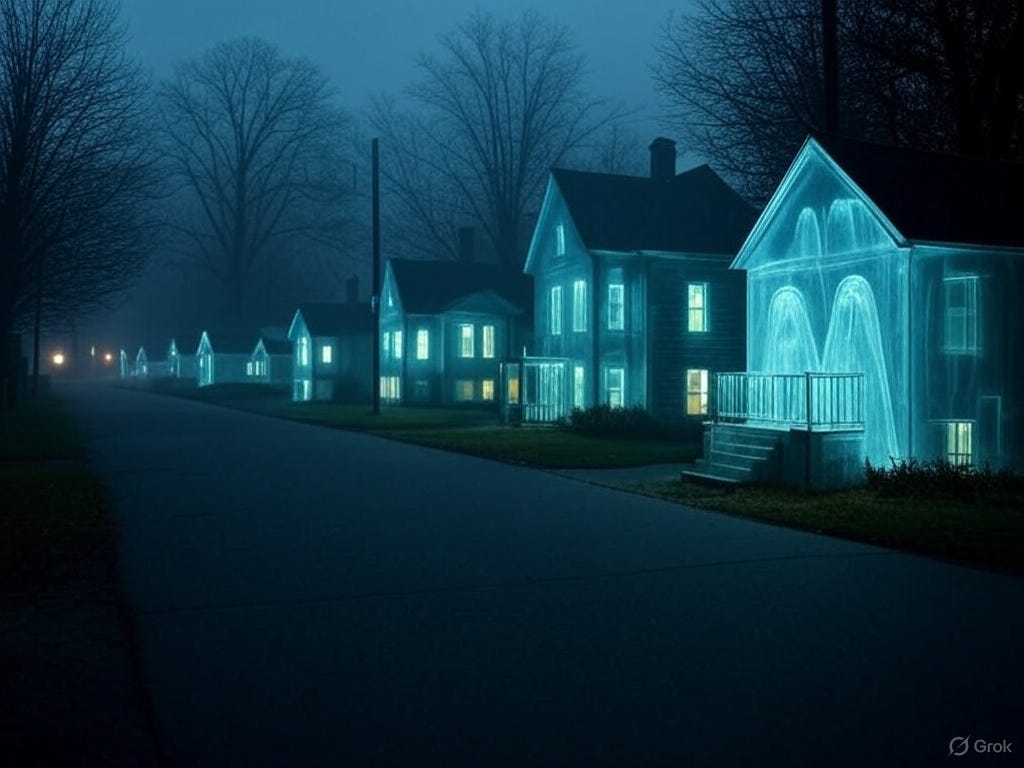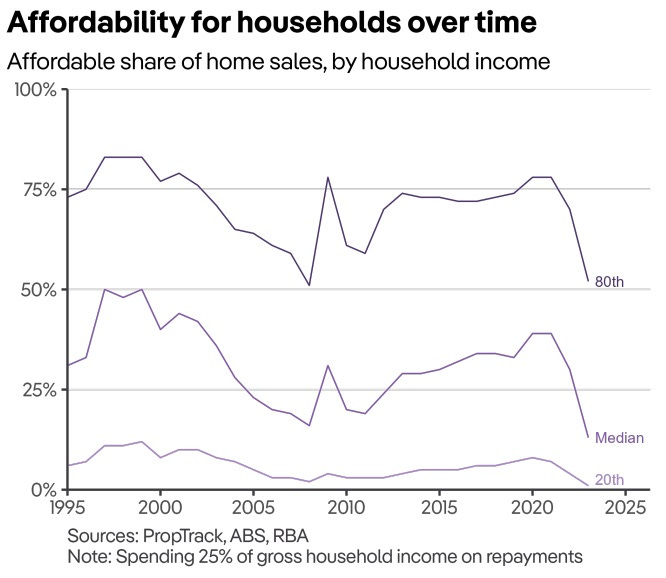Australia's Ghost Households
The Echo Of Households Never Allowed To Exist
Before we get into today’s article, here are a couple of bonus charts given that Australia goes to the polls for the federal election this weekend:
For a long time I’ve been attempting to understand the changes that have occurred in the aggregate fortunes of Australia’s households, in particular those in younger demographics.
At first glance it seems relatively obvious, 55.7% of households aged 25 to 34 rent, 2.9% own a property outright and 37.8% own a property with a mortgage. This compares to 47.8% renting, 11.1% owning outright and 41.1% owning with a mortgage in 1995-96. Overall the number of households who are aged 25-34 and own a home has fallen by 11.6 percentage points.
It is however worth noting the latest data snapshot was taken during the pandemic and the figure may have been distorted higher. The overall home ownership rate for this age cohort at the last pre-pandemic data point was 36.7%.
While these metrics in and of themselves provide an extremely concerning picture of the deteriorating fortunes of the nation’s 25 to 34 year old’s, this approach actually almost completely misses the dramatic drop in household formation rates for the 25-34 year old demographic.
Due to the fact that the proportion of households renting or with a mortgage is calculated based on the number of households with a reference person in the 25 to 34 age demographic, it can only tell you what those households that are actually established are doing.
Meanwhile, there are hundreds of thousands who would have been leading their own unique household if historical norms were maintained, who are instead sharehousing, still living with parents or living in other multi-generational households.
Today we will attempt to quantify how many more households there would have been led by 25 to 34 year olds if historical household formation rates had been maintained and also do some calculations on how this impacts and distorts home ownership rates higher.
The Household That Never Was
In order to quantify this change over time, we’ll be focusing on the ratio of households to population for the 25 to 34 demographic since 1995-96.
Between 1995-96 and 2005-06, the ratio of persons in the 25 to 34 age demographic per household led by someone in that age range was a remarkably stable 2.04 to 2.07.
Despite the end of broad based affordable housing to purchase in the early 2000s, household formation for the 25 to 34 age demographic still remained relatively strong for a time, with the strongest household to population ratio occurring in 2003-04.
The data for 2007-08 then highlights a profound deterioration in household formation for the 25 to 34 demographic. Household formation declined so significantly between 2005-06 and 2007-08, that there were fewer households in the 25 to 34 age demo then than there were over a decade earlier in 1995-96.
If the household to population ratio of 2005-06 had been maintained, there would have been 77,500 more households in 2007-08 led by someone 25 to 34. If the peak ratio from 2003-04 had been maintained, there would have been 92,700 more households in that demographic. Since then the ratio has deteriorated further and the rate of household formation for 25 to 34 year old’s has got significantly worse.
Keep reading with a 7-day free trial
Subscribe to Avid Commentator Report to keep reading this post and get 7 days of free access to the full post archives.





